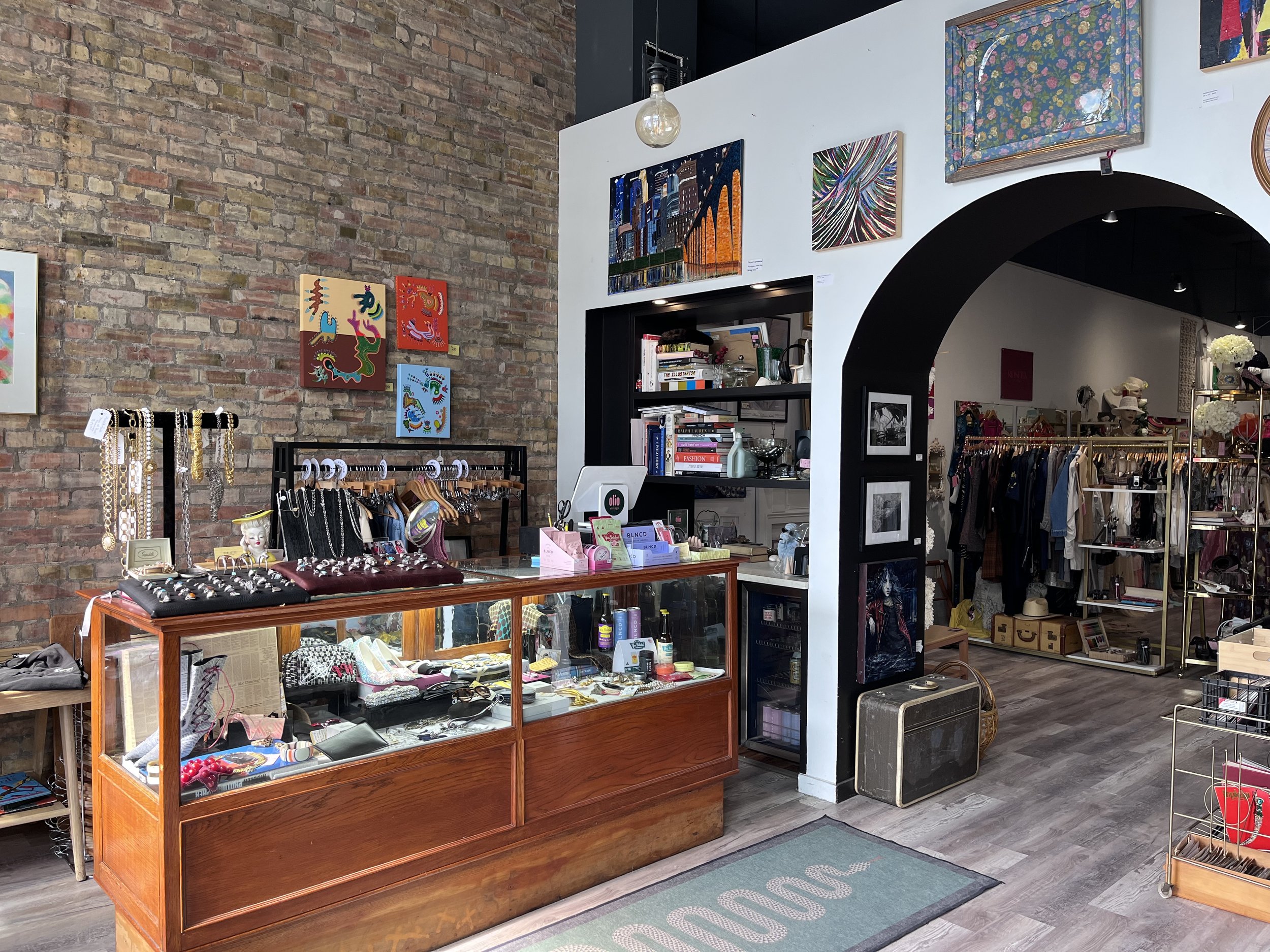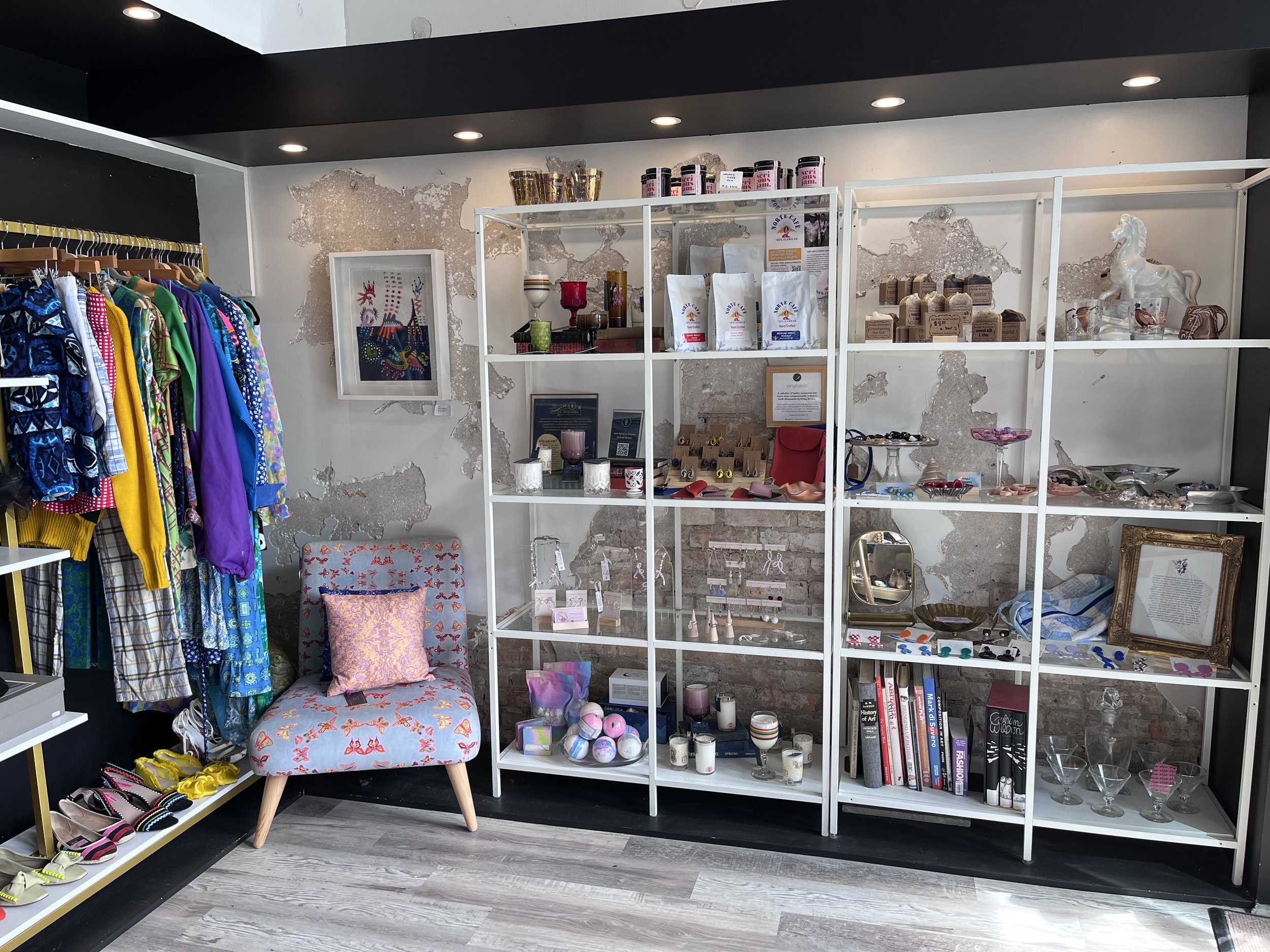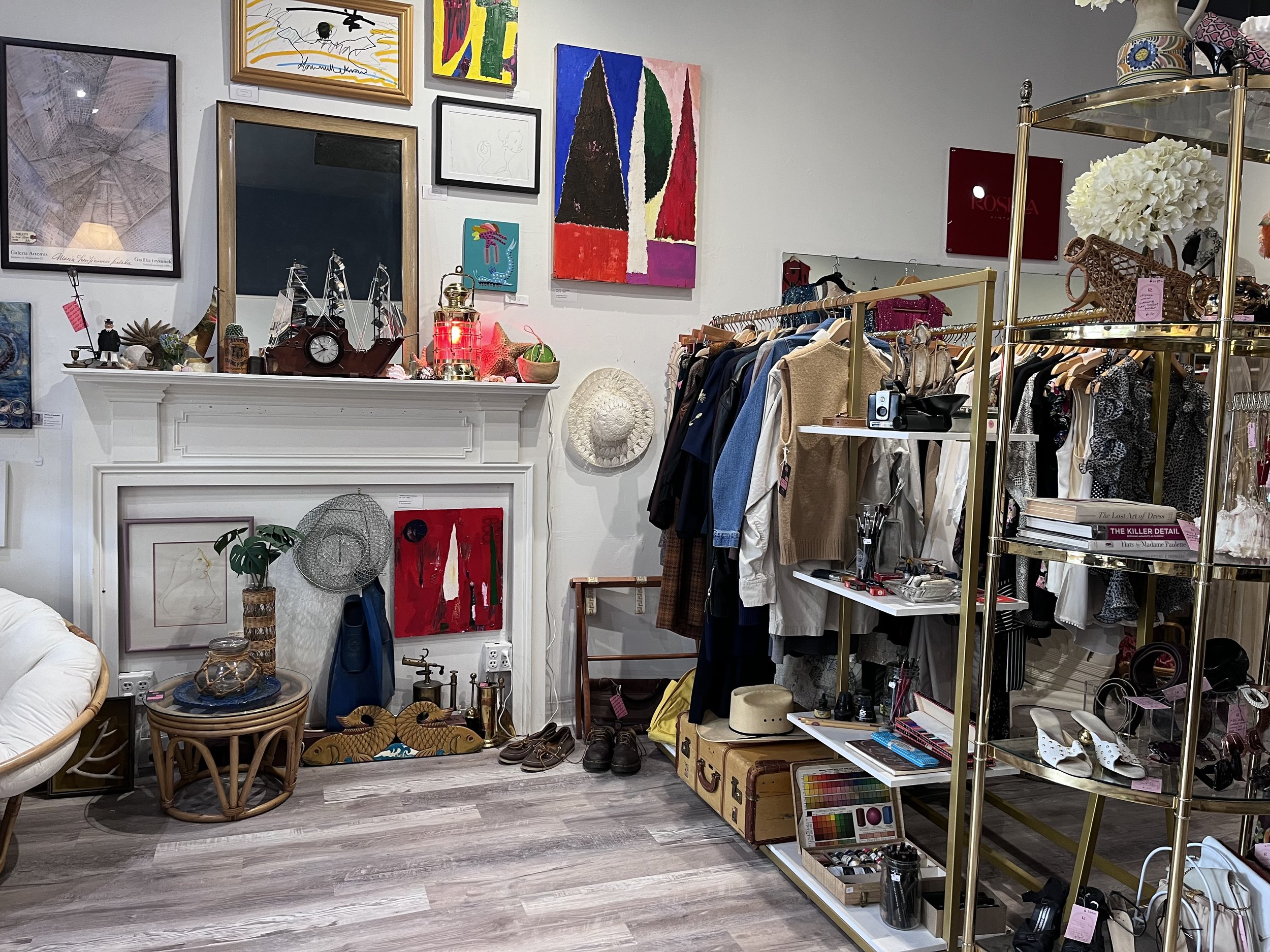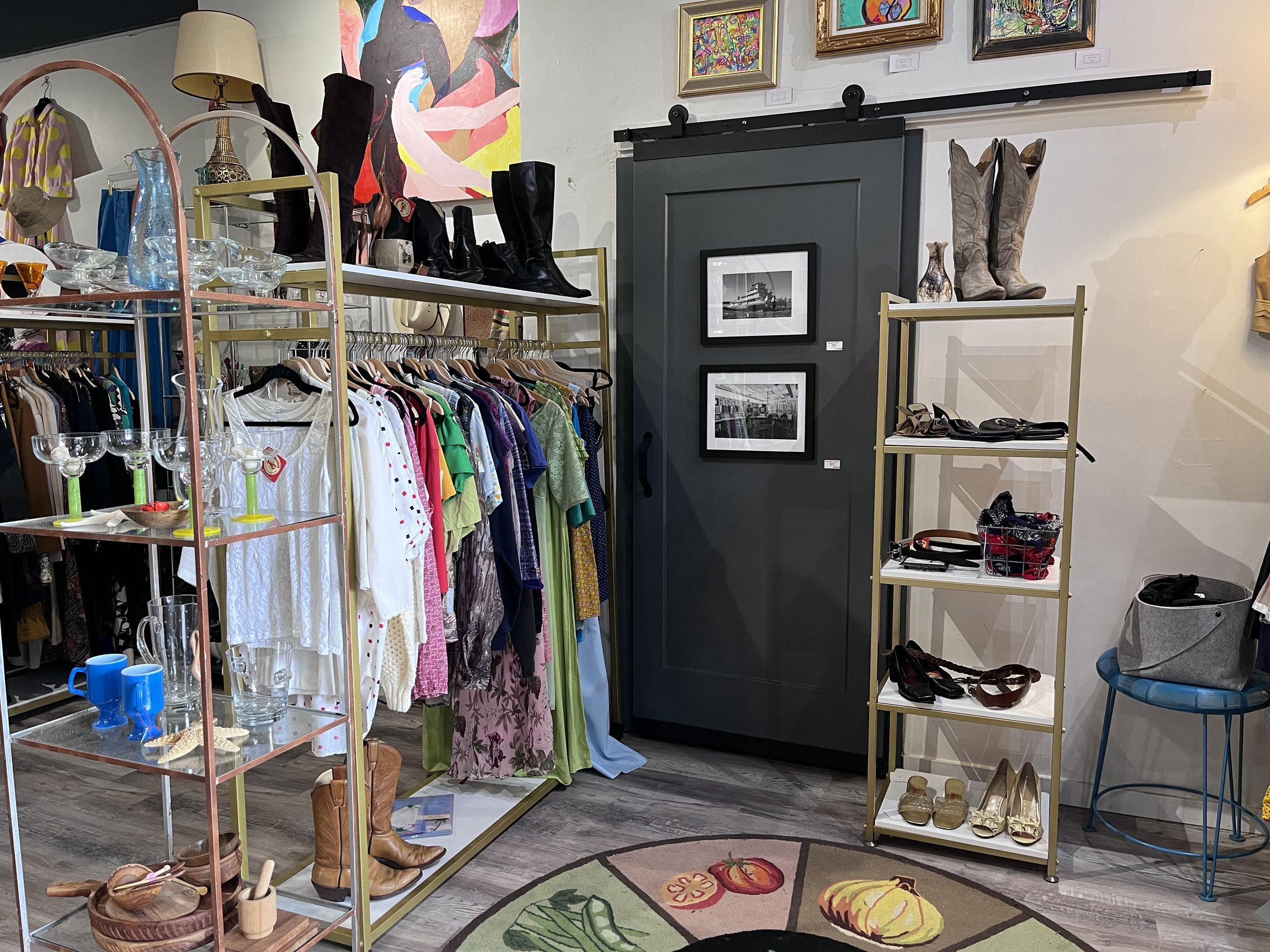Meet Carrie Martinson, the powerhouse behind Olio Vintage
“That’s the whole idea of all of this resale business is that well-made things can last a lifetime and be passed around from person to person. There’s so much new stuff being produced constantly that just gets thrown away within the year. Things that are 50-60 years old are still holding strong because the quality was just so much better. It’s nice to keep those things in circulation.” says Carrie Martinson





Olio Vintage opened its doors in October of 2023—a collective of vintage retailers under one roof. The namesake Olio, Rosella, Blvck Nvni, and Oubliette are core vendors. Permanent vendors are Hausle Shop, Lobstergarden, Red Eye Vintage, Cynical Fool, and Flicker and Fizz. “We all met at markets.” Says Carrie Martinson of Olio. “I didn’t want to just do something on my own, I wanted to make it a group effort with a variety of different kinds of vendors. I feel like it’s just more interesting when you do it as a group venture.”
“There’s a huge community of vintage vendors in the Twin Cities and we’re all a great community and support each other.” This month’s rotating vendors/artists include Palisaint, Henry Forcelle, Benjamin Allen, Sheila Peterson, Sander Kolodziej, Twigminn, Flourishing Femme, Blugirlsoapworks, Norte Cafe, serious jam, O Estelle jewelry, Cloaked in Confidence, Vida Plant Co, and photos by 1st Ascent.
Martinson juggles more than just Olio's duties. A typical day for her includes calling people or going to clients’ houses for estate sale estimates, opening Olio, working the store for a few hours, sourcing at other thrift stores, or going to houses for buying appointments. Not to mention family stuff, Martinson is a mother as well.
“Really kind of fascinating selling the lifetime belongings of an individual. You learn a lot about the person and their family, and their taste as a person, and their hobbies and their passions. I feel like it’s really rewarding finding a new home for things rather than just having to toss everything in the house.” Martinson says of the estate sale business she’s been running for the last 9 years. “That’s the whole idea of all of this resale business is that well-made things can last a lifetime and be passed around from person to person. There’s so much new stuff being produced constantly that just gets thrown away within the year. Things that are 50-60 years old are still holding strong because the quality was just so much better. It’s nice to keep those things in circulation.”
The vision for Olio has been around for much longer than its brick-and-mortar has. Martinson wrote a business plan for her senior thesis in college about a store that sold not only clothing she made, Martinson also created a line of muslin outfits, but other designers, and vintage. “The whole premise was to have it look like a boutique and not an antique mall. That’s a concept I wanted to hold onto with this (Olio) to have local artists and vintage that didn’t just look like some of the places where it’s different stalls and dark. I wanted it to be accessible to people who don’t necessarily like vintage and understand it. Make it attractive to a wider audience who then can get into buying things second hand because sometimes it’s just about perception and making it look boutiquey and attractive can draw people in.”
Olio is just that a boutique experience filled with collaboration, and beautiful objects. Nothing about the store gives you the feeling of being in a dimly lit antique mall. The items are arranged artfully and well taken care of. If you just walked in off the street you might not even know it was vintage.
When asked about the future of fashion Martison has one request, buy things used. “It doesn’t matter if it’s older than 20 years old or less than 20 years old. I’d love to see more young people stop shopping on Amazon and either buy things from thrift stores or Turnstyle even. Just buying things used instead of new I think can have a huge impact globally on our environment and I would love to see that become important to people. Not just that they’re doing it but that they’re doing it consciously and consciously not buying fast fashion. Then it’ll maybe stop being a thing.”